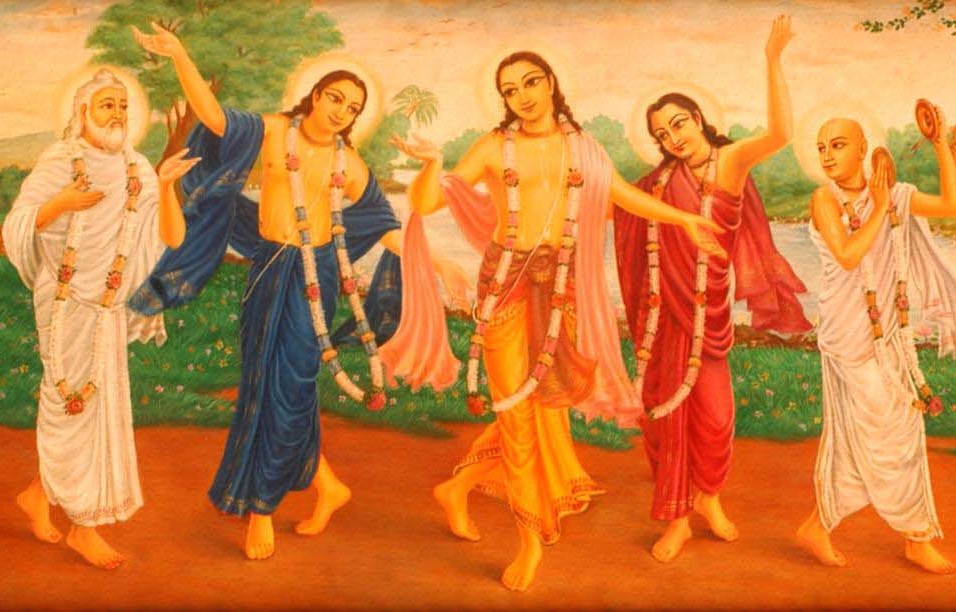
The Supreme Person, Krishna or Govinda, appeared in this world 5000 years ago and spoke the Bhagavad-gita to enlighten the souls trapped in the material world and show them the way to become spiritually purified and return to Him. This process is called bhakti yoga, or union with God through love. He taught that love for Him was the only way by which he could be attained. He said:
And of all yogis, he who always abides in Me with great faith, worshiping Me in transcendental loving service, is most intimately united with Me in yoga and is the highest of all
[Bhagavad gita 6:47]
Always think of Me and become My devotee. Worship Me and offer your homage unto Me. Thus you will come to Me without fail. I promise you this because you are My very dear friend. Abandon all varieties of religion and just surrender unto Me. I shall deliver you from all sinful reaction. Do not fear.
[Bhagavad-gita 18:65-66]
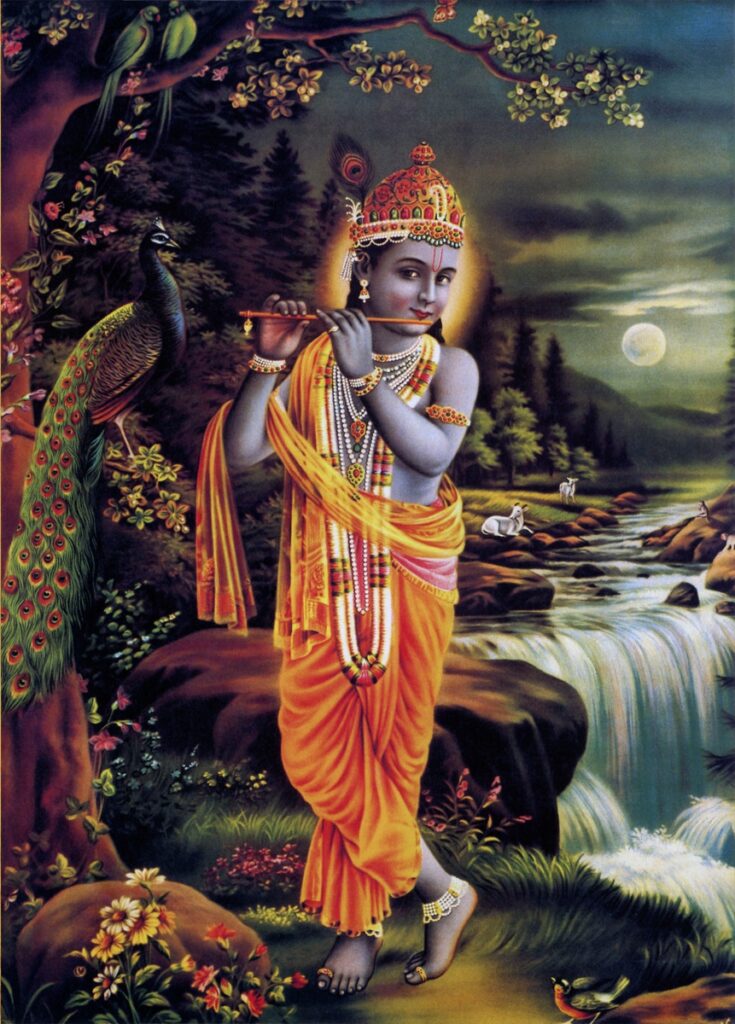
Vyasadeva
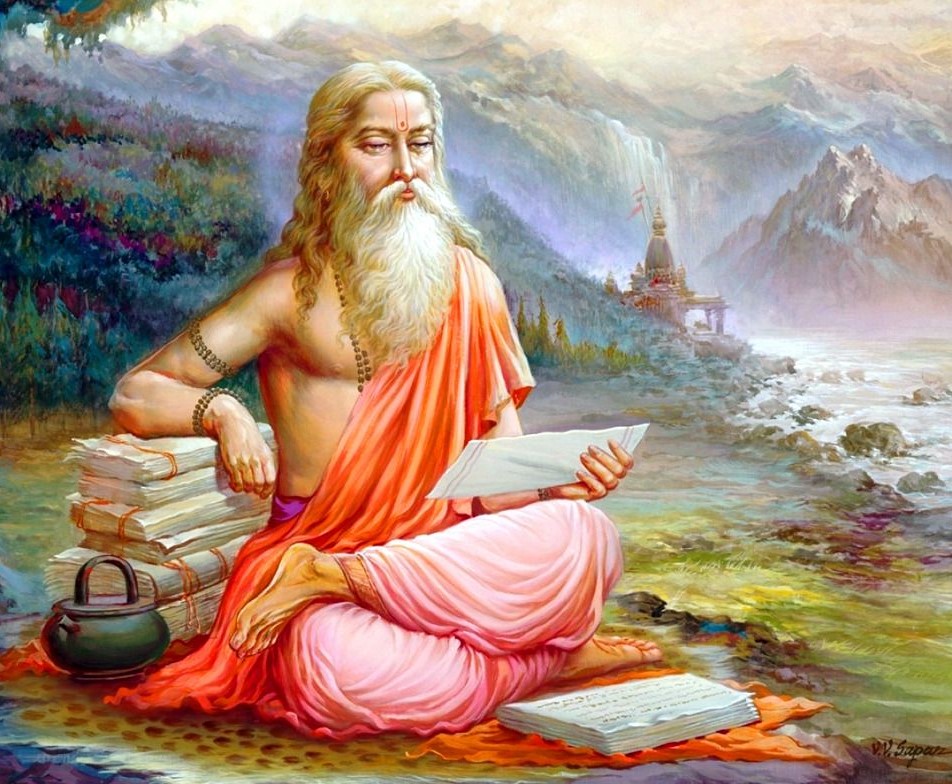
Krishna’s teachings in Bhagavad-gita, as well as the Srimad Bhagavatam, which tells the story of His life, were recorded by the great sage Vyasadeva, the author of the Vedic scriptures, at the time when Krishna was on the planet and immediately after He left. In Srimad Bhagavatam and many other Vedic literatures written down 5,000 years ago, Vyasadeva predicted that Krishna would come again in the guise of His own devotee, with a golden form [Gauranga means “one whose form is like molten gold”], would be called Chaitanya, and would teach the simplest and most effective means to attain love for Himself – through kirtan, the congregational chanting of His holy names.
In the Brahma-vaivarta Purana we find mention of a 10,000 year period within the present age of Kali Yuga during which Vaisnavism and the chanting of Krishna’s holy names will flourish in the world. The following verses from the Brahma-vaivarta Purana were spoken by Lord Krishna to Mother Ganga just before the beginning of Kali yuga. They describe this 10,000 year golden age ushered in by Lord Chaitanya’s appearance:
Ganges said: O protector, Supreme enjoyer, on your departure for the perfect abode, Goloka, thereafter what will be my situation in the age of Kali? The blessed Lord said: On the earth 5,000 years of Kali will be sinful and sinners will deposit their sins in you by bathing. Thereafter by the sight and touch of those who worship me by my mantra [the Hare Krishna maha-mantra] all those sins will be burnt. There will be chanting of the name of Hari and reading of the [Bhagavata] Purana [Srimad Bhagavatam]. … O Ganges, the whole planet will become a pilgrimage sight by the presence of My devotees, even though it had been sinful. In the body of my devotees remains eternally the purifier. Mother earth becomes pure by the dust of the feet of my devotees. It will be the same in the case of pilgrimage sites and the whole world. Those intelligent worshipers of My mantra who partake My remnants will purify everything. … For 10,000 years of Kali such devotees of mine will fill the whole planet. After the departure of My devotees there will only be one varna [outcaste]. Devoid of My devotees, the earth will be shackled by Kali. Saying this, Krishna departed.
[Brahma-vaivarta Purana: texts 49-60]
Chaitanya Mahaprabhu
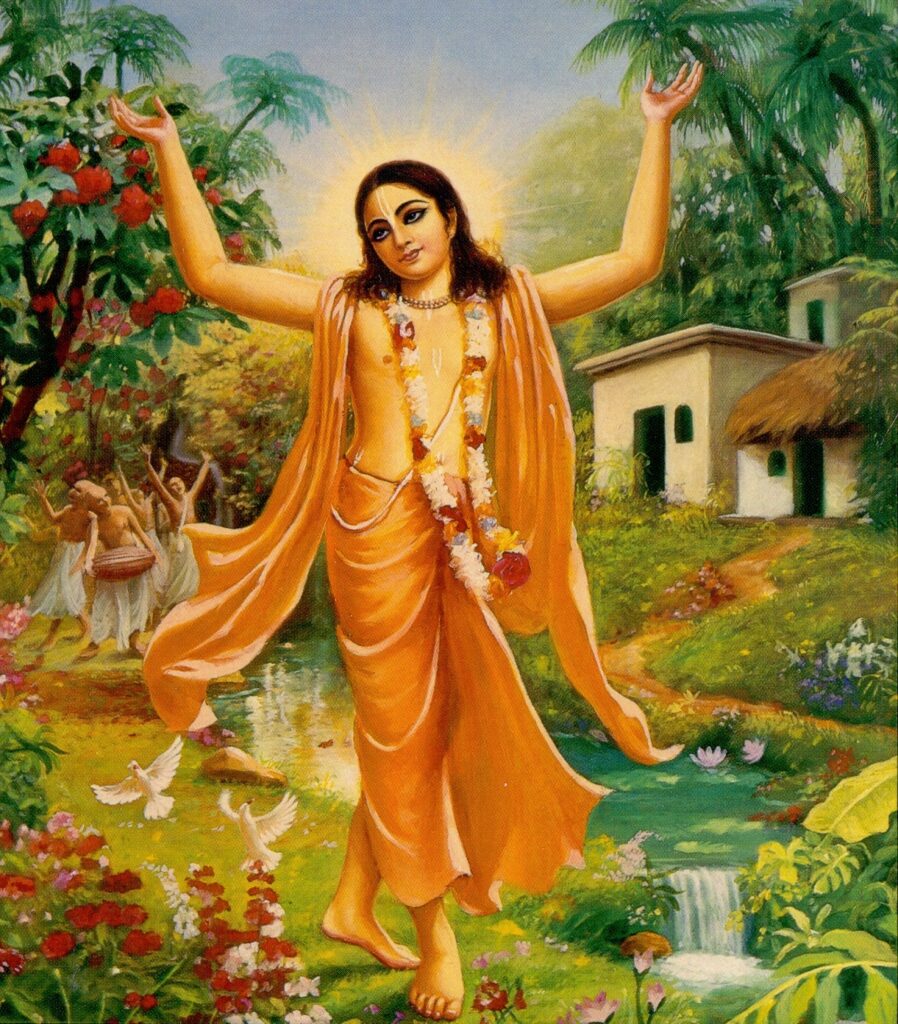
This world-wide sankirtan movement was inaugurated 500 years ago in India by Lord Chaitanya. Lord Chaitanya foretold that this movement would spread throughout the world, and His prophetic words were recorded by Vrindavan das Thakur, an incarnation of Vyasadeva, in the Chaitanya Bhagavata, written 500 years ago:
prthivite ache yata nagaradi-grama
sarvatra pracara haibe mora noma
In as many towns and villages as there are on the surface of the earth, My Holy Names will be preached.
[Caitanya-bhagavata 4:126]
In other Vedic literatures we find the following verses describing Lord Chaitanya’s sankirtan movement:
Sometimes I personally appear on the surface of the world in the garb of a devotee. Specifically, I appear as the son of Saci in Kali-yuga to start the sankirtan movement.
[Brahma-yamala]
The religious practice for the age of Kali is to broadcast the glories of the holy name. Only for this purpose has the Lord, in a yellow colour, descended as Lord Chaitanya.
[Chaitanya-caritamrta Adi 3:40]
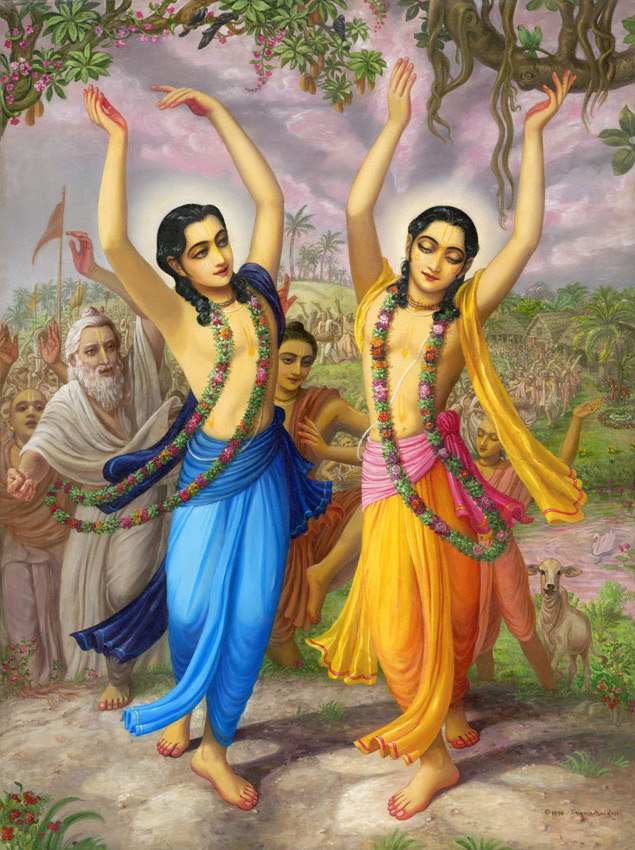
My dear King, although Kali-yuga is an ocean of faults, there is still one good quality about this age: Simply by chanting the Hare Krishna maha-mantra, one can become free from material bondage and be promoted to the transcendental kingdom.
[Srimad Bhagavatam 12:3:51]
harer nama harer nama harer namaiva kevalam
kalau nasty eva nasty eva nasty eva gatir anyatha
Chant the holy name, chant the holy name, chant the holy name. There is no alternative, there is no alternative, there is no alternative for God-realisation in this age of Kali (chaos, quarrel and confusion).
[Brhan-Naradiya Purana 38:126]
Bhaktivinoda Thakur
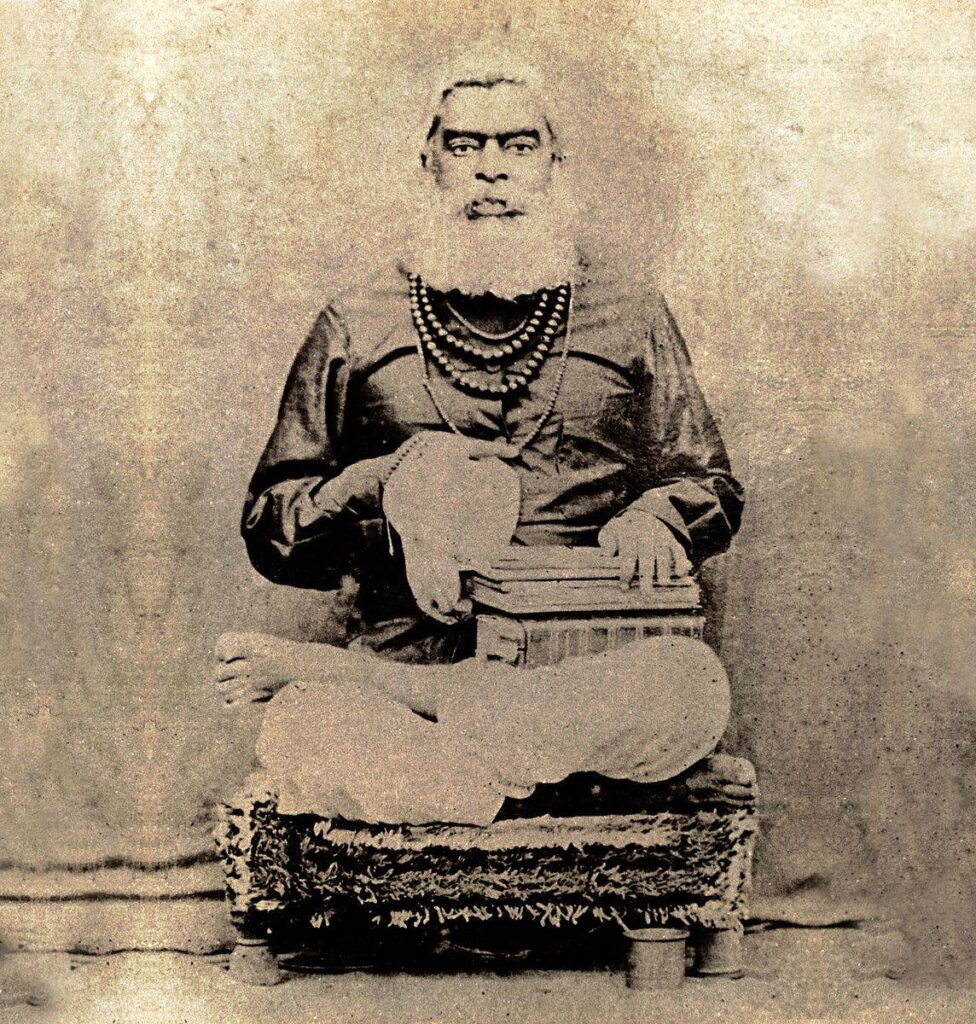
Lord Chaitanya’s movement was passed on in India via disciplic succession for 400 years or so, until Bhaktivinoda Thakur [1838-1914] came along. He was extremely well educated, and could write and speak Sanskrit, Bengali, Hindi, Oriya, Urdu and English. As a young man he was a school teacher, philosopher, orator, poet and scholar who later became a District Court Magistrate under the British Raj. He collected many important Vedic literatures that up until that time were only hand written on palm leaves, and translated them into various Indian dialects as well as English and had them published. He wrote approximately one hundred books in Sanskrit, Bengali, Oriya, Hindi, Urdu and English. He also wrote many wonderful devotional poems and was the first great Vaisnava teacher to write about Krishna and Lord Chaitanya in the English language.
Bhaktisiddhanta Sarasvati
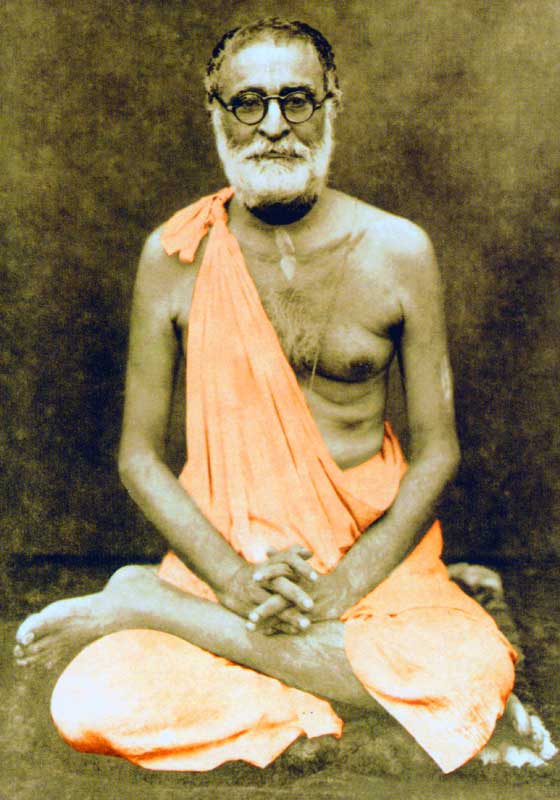
His son, Bhaktisiddhanta Sarasvati [1874-1937] was the greatest scholar in all of India during his lifetime. He had an encyclopaedic mind, and by the age of nine he had completely memorised all 700 verses of the Bhagavad-gita, and could explain their meaning. When he was twenty-one years old, he was secretary and historian at the royal court of the King of Tripura. He was learned in both Indian and Western works of history, philosophy, and religion, and started his own astronomy school in Calcutta in his early twenties, and was later offered positions as a professor of astronomy in various universities, which he turned down to focus solely in teaching, translating and publishing many books and articles on Vaisnava philosophy. Bhaktisiddhanta Sarasvati had a photographic memory and in his old age could still recall word-for-word whole passages from books he had read in his childhood and youth. But most importantly, he was a great lover of the Supreme Person.
In 1922 Bhaktisiddhanta was giving a public lecture in Calcutta, and a young man who had just finished his chemistry degree came to hear him speak. Abbhay Charan De, who would later become Srila Bhaktivedanta Swami Prabhupad, was at this time a member of Ghandi’s Civil Disobedience Movement, and was caught up in the quest for Indian Independence. When Bhaktisiddhanta said that it was imperative that the teachings of Lord Chaitanya be spread all over the world, Bhaktivedanta said something to the effect of, “Who will listen to us. We are a subjugated nation [a British Colony]. Who will take our message seriously when there are so many independent nations in the world?”
Srila Bhaktivedanta Swami Prabhupad
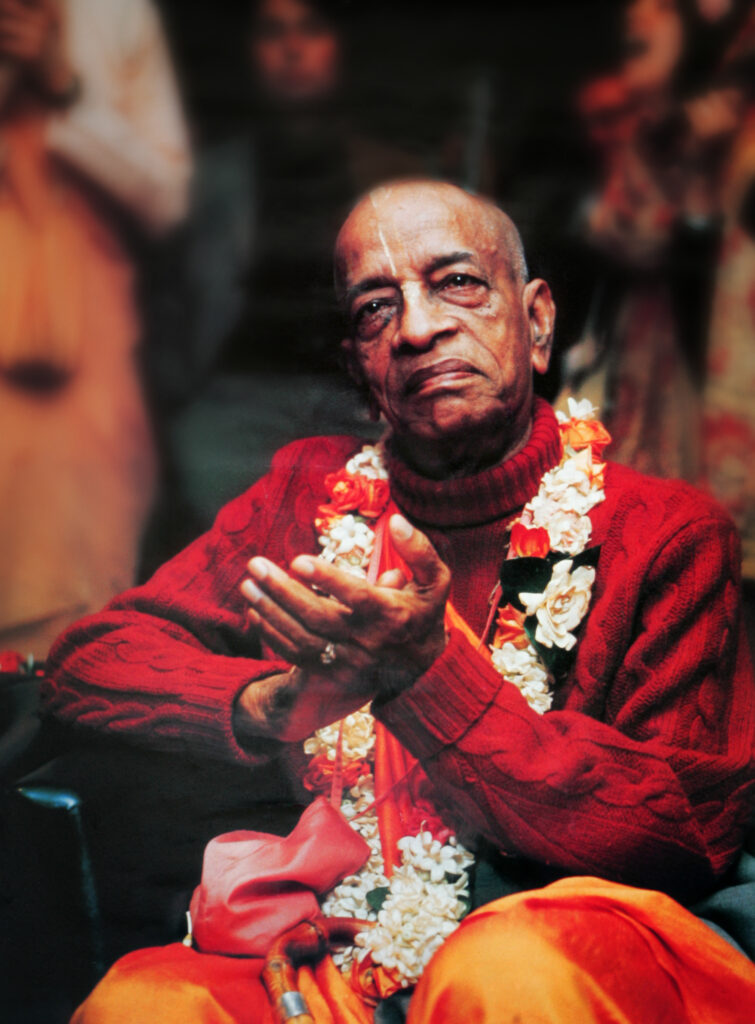
Bhaktisiddhanta defeated him in debating this point, saying that dependence and independence are only temporary situations, but each of us is eternally a part and parcel of God, and we cannot be happy unless we are reunited with Him in love. Srila Bhaktivedanta Swami was convinced at this meeting, and Bhaktisiddhanta instructed him at this time that an educated young man like himself should take up this mission and spread the message of Lord Chaitanya and the chanting of the holy names throughout the Western World. Bhaktivedanta was about twenty-six and had a young family at this time. Although he felt totally incapable of fulfilling this request, he gradually accepted this as his life’s mission. He was formally initiated as a disciple of Bhaktisiddhanta Sarasvati eleven years later, in 1933. In December 1936, just two weeks before Bhaktisiddhanta Sarasvati departed this world, he repeated the same instruction to Srila Bhaktivedanta Swami in a letter.
In the history of our disciplic succession, Bhaktivinoda Thakur and Srila Bhaktisiddhanta Saraswati were the first spiritual masters to preach in the English language. It was their desire to spread the message of Lord Chaitanya, the worship of the holy names, throughout the entire world. In the 1880’s, Srila Bhaktivinoda Thakur penned a prediction which applies most certainly to Srila Bhaktivedanta Swami Prabhupada:
“A personality will soon appear to preach the teachings of Lord Chaitanya and move unrestrictedly over the whole world with His message.”
This prediction, written in the mid-1880’s, about ten years or so before the birth of Srila Bhaktivedanta Swami in 1896, came in the age of sailing ships, many years before the aeroplane was even invented. At this time, the thought of a jet-setting old swami circling the globe in saffron robes delivering the names and words of Krishna was inconceivable. Only a great saintly person such as Bhaktivinoda Thakur could have such vision. But eighty years later it was to be fulfilled because of the combined desire and mercy of Krishna and his pure surrendered devotees.
But Srila Bhaktivedanta Swami would not take any credit for his amazing success, despite his overcoming incredible hardships and difficulties to achieve what was really humanly impossible for a man in his seventies and eighties with no money, in poor health, in a foreign and strange land. He saw the will of Krishna and his Spiritual Master as the reason for his success and would not take any credit for himself.
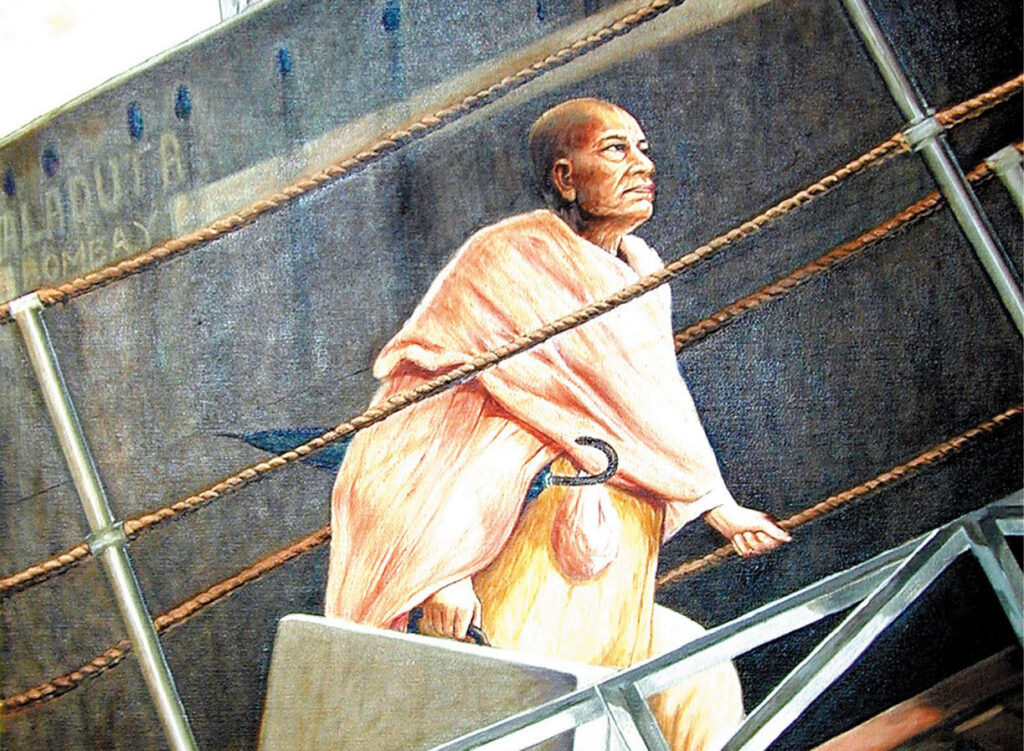
Srila Bhaktivedanta Swami came to the United States in 1965, after being given free passage on the steamship Jaladuta. The early stages of the voyage were very rough, and Srila Bhaktivedanta Swami had a number of heart attacks on the way over. He had the equivalent of seven dollars on him on arrival, a small stove on which he cooked his meals, a few dhotis and a trunk full of books he had published while in India. On arriving in New York, he lived for a while with some hippies who were taking LSD and other drugs, and one time he was attacked by one of these hippies while he was hallucinating on a bad acid trip. The winter of 1965 was the coldest winter in New York so far that century. He would sit alone under a huge tree in Tompkins Square Park in the East Village of New York and chant the Hare Krishna mantra and hundreds of hippies soon joined in, chanting, dancing and playing musical instruments. This was the beginning of Lord Chaitanya’s sankirtan movement in the western world. Within eleven years he had circled the globe about a dozen times, established a hundred temples world-wide, initiated over 5000 disciples and published 100 books in English.
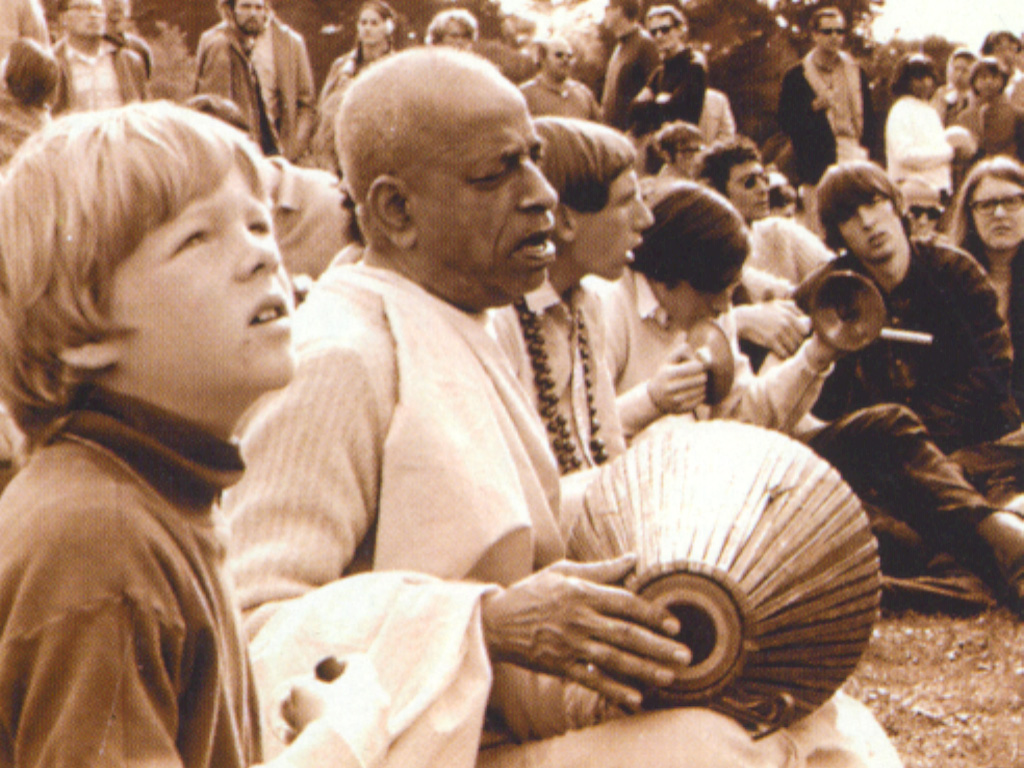
Srila Bhaktivedanta Swami would often say, “We are simply looking for just one moon. There may be many stars in the sky, but all of their light together is insignificant compared to the light of just one moon.” He knew that if he could produce at least one perfect disciple then Lord Chaitanya’s movement would be in perfect hands and would continue to spread, as Lord Chaitanya predicted, to every town and village in the world. In 1970 he initiated Jagad Guru Siddhaswarupananda, and due to his great determination and spiritual potency, Lord Chaitanya’s sankirtan movement has continued to spread throughout the world.
Jagad Guru Siddhaswarupananda
In the late sixties, Jagad Guru Siddhaswarupananda was successful at practicing kundalini or astanga yoga. Realizing the impersonal aspect of the Supreme, he successfully merged into the ocean of spiritual light, the Brahman effulgence which makes up the outer circumference of the spiritual world. At that time, he thought that was the ultimate experience, the ultimate happiness. And moved by compassion he set up a number of ashrams teaching kundalini yoga. But by the Lord’s arrangement, he then came in contact with the teachings of Srila Bhaktivedanta Swami Prabhupad, read the Bhagavad-gita and other Vedic literatures, and started practicing and teaching bhakti yoga.
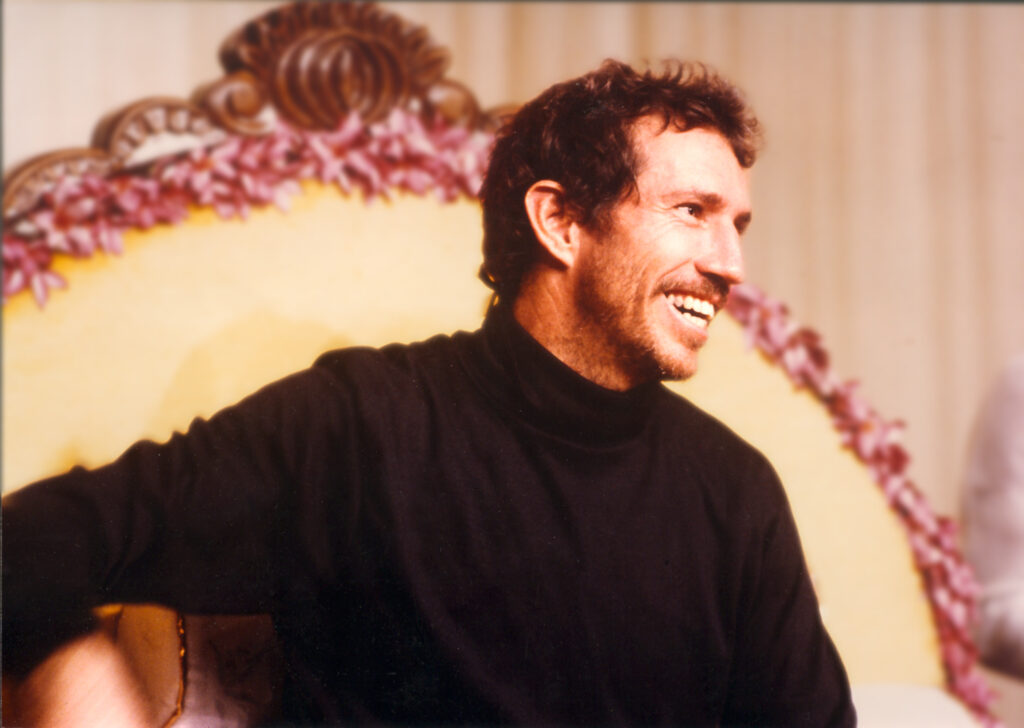
Siddhaswarupananda quickly realized that the Absolute Truth atually had three aspects – the impersonal Brahman effulgence, the Paramatma or partial expansion of the Lord Who guides us from within the heart, and the Personality of Godhead, Lord Krishna, Who is the cause of all causes – the source of all spiritual and material energies. He understood that the ocean of spiritual light was the bodily effulgence springing from the Supreme Person, and that the happiness of merging with this spiritual effulgence was miniscule compared to the unlimited ananda or bliss of having an eternal loving relationship with the Supreme Person. Siddhaswarupananda wanted everyone to experience this greatest of all pleasures. He became an initiated disciple of Bhaktivedanta Swami, and since the early seventies he has taught this wonderful spiritual process, initiating his own disciples after Bhaktivedanta Swami left this world in 1977. Due to his great determination and spiritual potency, Lord Chaitanya’s sankirtan movement has continued to spread throughout the world.
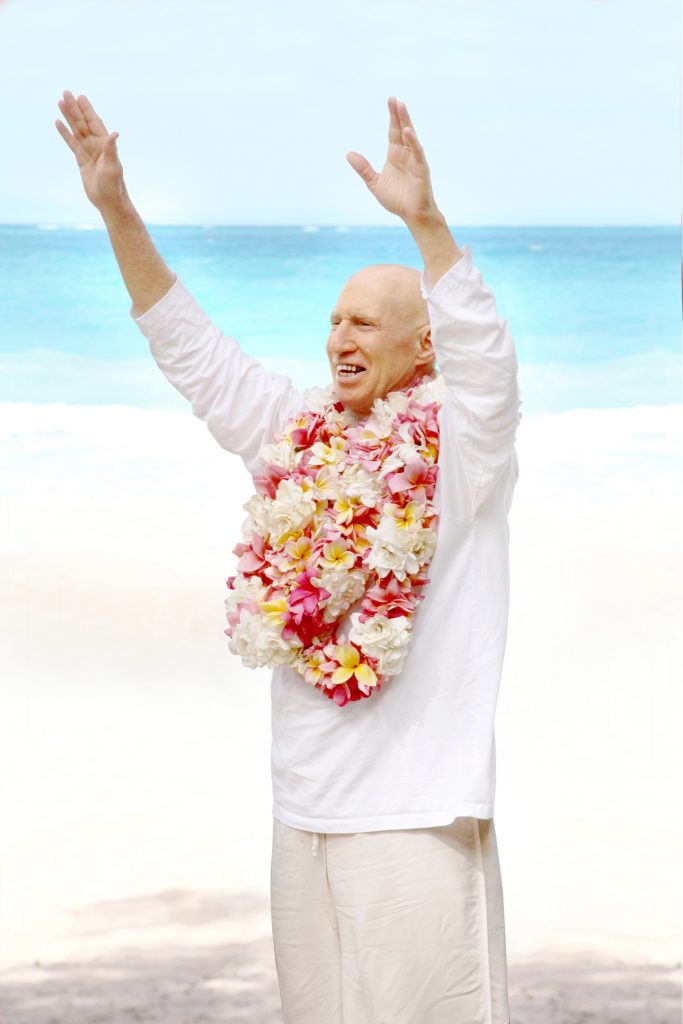


Leave A Reply